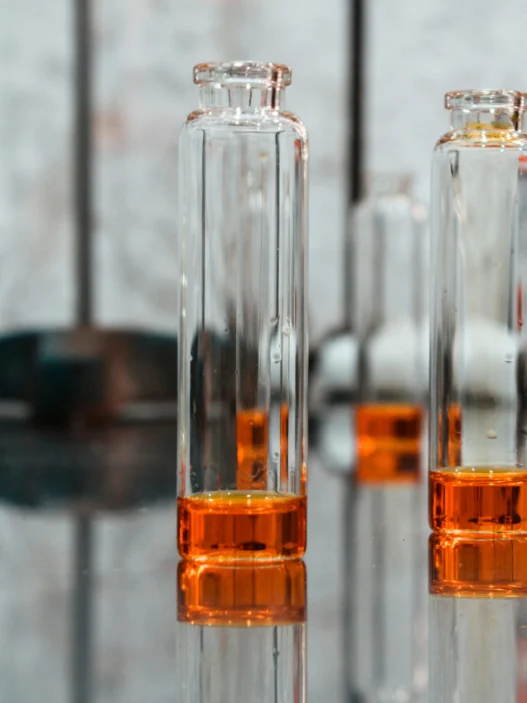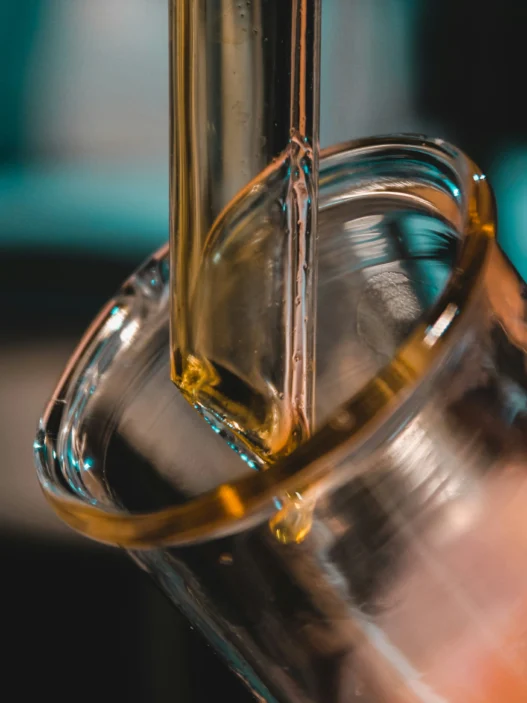Ferulic acid, a naturally occurring compound found in various plants, has garnered increasing attention in recent years for its potential health benefits. Studies have shown that ferulic acid possesses antioxidant properties, which can help protect cells from damage caused by free radicals. Additionally, ferulic acid has been linked to anti-inflammatory and anti-aging effects, making it a promising ingredient in skincare products. As such, ferulic acid holds relevance in everyday life for those seeking to maintain a healthy lifestyle and youthful appearance.
Table of Contents:
- 💡 Commercial Applications
- ⚗️ Chemical & Physical Properties
- 🏭 Production & Procurement
- ⚠️ Safety Considerations
- 🔬 Potential Research Directions
- 🧪 Related Compounds
💡 Commercial Applications
Ferulic acid, a phenolic compound found in various plant tissues, has several commercial and industrial applications. It is commonly used as an antioxidant in the food and cosmetic industries, where it helps extend the shelf life of products by preventing oxidation. Ferulic acid also has anti-inflammatory properties, making it a valuable ingredient in skincare products aimed at reducing redness and irritation.
In addition to its commercial and industrial uses, ferulic acid has shown promise in the field of drug development and medication. Studies have suggested that ferulic acid may have potential therapeutic effects in treating various diseases, including diabetes, cardiovascular diseases, and cancer. Its antioxidant and anti-inflammatory properties make it a promising candidate for pharmaceutical applications aimed at combating oxidative stress and inflammation in the body.
Overall, ferulic acid’s diverse range of applications in both commercial and industrial settings, as well as in drug development and medication, highlight its importance as a versatile compound with numerous potential benefits for human health and well-being. Further research and exploration of its properties and uses are likely to uncover even more valuable applications in the future.
⚗️ Chemical & Physical Properties
Ferulic acid is a white crystalline powder with a faint characteristic odor. It is sparingly soluble in water and most organic solvents, and is commonly found in the cell walls of plants such as rice, wheat, and spinach.
The molar mass of ferulic acid is approximately 194.18 g/mol, with a density of 1.1 g/cm3. In comparison to common food items, ferulic acid has a higher molar mass than glucose (180.16 g/mol) and a lower density than olive oil (0.92 g/cm3).
Ferulic acid has a melting point of 169-173°C and a boiling point of 278-282°C. These values are higher than those of sugar (melting point of 160-186°C) and water (boiling point of 100°C), making ferulic acid more heat stable.
🏭 Production & Procurement
Ferulic acid is a naturally occurring compound that is commonly found in the cell walls of plants such as fruits, vegetables, and grains. The production of Ferulic acid typically involves the extraction of plant materials rich in this compound, followed by various purification processes to obtain a high-quality product.
To procure Ferulic acid, one can source it from plant-based materials directly or through commercial suppliers that specialize in its extraction and production. Once obtained, Ferulic acid can be transported in various forms such as liquid solutions or solid powders, depending on the intended use and application.
The transportation of Ferulic acid is typically done in compliance with regulatory guidelines to ensure its safe handling and delivery. This may involve using specialized containers or packaging materials that are suitable for transporting chemicals and ensuring their stability during transit. Overall, the procurement and transportation of Ferulic acid require careful attention to detail to maintain its quality and integrity.
⚠️ Safety Considerations
Safety considerations for Ferulic acid must be taken into account due to its potential to cause skin and eye irritation. It is important to handle Ferulic acid with care, wearing appropriate personal protective equipment such as gloves and safety glasses. In case of ingestion or inhalation, seek medical attention immediately.
Hazard statements for Ferulic acid include causes skin and eye irritation. It may cause respiratory irritation if inhaled. Avoid contact with skin, eyes, and clothing. Keep away from heat, sparks, open flames, and hot surfaces. Store in a well-ventilated place. Wash hands thoroughly after handling.
Precautionary statements for Ferulic acid include wearing protective gloves, eye protection, and face protection. If skin irritation or rash occurs, seek medical advice/attention. In case of contact with eyes, rinse cautiously with water for several minutes. Remove contact lenses, if present and easy to do. Continue rinsing. If experiencing respiratory symptoms, move to fresh air. If symptoms persist, seek medical attention. Store in a well-ventilated place. Keep container tightly closed.
🔬 Potential Research Directions
One potential research direction for ferulic acid is its role as an antioxidant in various biological systems. Studies could investigate its ability to scavenge free radicals and protect cells from oxidative damage.
Additionally, research could be conducted to explore the potential anti-inflammatory properties of ferulic acid. Investigations may focus on its ability to modulate immune responses and reduce inflammation in conditions such as arthritis or inflammatory bowel disease.
Furthermore, there is a growing interest in the potential anti-cancer properties of ferulic acid. Research could delve into its mechanisms of action against cancer cells and its potential as an adjuvant therapy for various types of cancer.
🧪 Related Compounds
Vanillin, also known as 4-hydroxy-3-methoxybenzaldehyde, is a compound structurally similar to ferulic acid. With a molecular formula of C8H8O3, vanillin is commonly found in the vanilla bean and is widely used as a flavoring agent in various food and cosmetic products. Like ferulic acid, vanillin possesses antioxidant properties and has been studied for its potential health benefits.
Caffeic acid, a hydroxycinnamic acid, is another compound closely related to ferulic acid. With the molecular formula C9H8O4, caffeic acid is found in various plant sources such as coffee, apples, and berries. Known for its antioxidant and anti-inflammatory properties, caffeic acid has been a subject of interest in research for its potential health-promoting effects. Like ferulic acid, caffeic acid plays a role in plant defense mechanisms and exhibits photoprotective properties.
Sinapic acid, also a member of the hydroxycinnamic acid family, bears structural similarities to ferulic acid. With a molecular formula of C11H12O5, sinapic acid is found in plants such as mustard, broccoli, and sesame seeds. Known for its antioxidant and anti-inflammatory effects, sinapic acid has been studied for its potential health benefits, including its role in reducing oxidative stress and inflammation. Like ferulic acid, sinapic acid may have protective effects against various chronic diseases.





